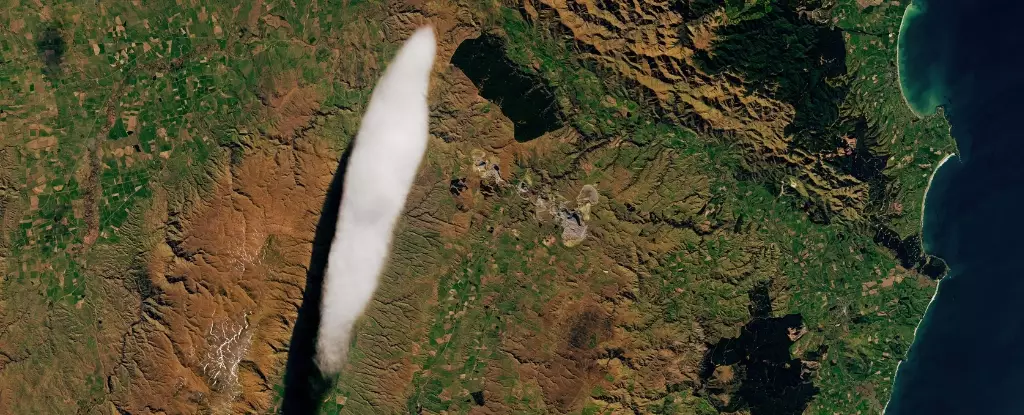New Zealand is often hailed as a cinematic paradise, attracting filmmakers and photographers alike with its breathtaking vistas. Its unique geography, which ranges from lush, subtropical beaches to dramatic volcanic landscapes, has rendered it a top choice for blockbuster films like “The Lord of the Rings.” Yet, beyond the rolling hills and scenic coastlines lies a distinct atmospheric phenomenon that further enhances the country’s allure: the Taieri Pet cloud.
The Taieri Pet is not just an ordinary cloud; it is a stunning exhibition of nature’s forces and atmospheric conditions. Forming elegantly over the Rock and Pillar Range, located in the Strath-Taieri region of Otago, this lenticular cloud is known for its unique, saucer-like shape. The formation occurs when winds encounter the mountain and are forced upward, creating a drop in pressure on the leeward side. This interaction results in standing waves, which may condense into the visually striking Taieri Pet when moisture in the air cools.
The classification of clouds does not stop at their shapes; lenticular clouds can be subdivided into three categories: altocumulus, stratocumulus, and cirrocumulus. Each type forms at different altitudes, exhibiting various characteristics. For instance, the altocumulus standing lenticular cloud usually floats higher in the atmosphere, while the stratocumulus variety remains lower. Despite their differences, all share a common origin: the disruption of airflow caused by geographical features.
The Taieri Pet’s history is steeped in local folklore and meteorological significance. Documentation of this cloud dates back to the 1890s in local newspapers, which often referred to its appearance as a harbinger of inclement weather. Such cultural significance illustrates how nature intertwines with the lives of communities, fostering a sense of respect and awe for these natural phenomena and their implications.
Moreover, Middlemarch, a quaint town nearby, often witnesses the emergence of the Taieri Pet. Residents have grown accustomed to its periodic appearances, which can evoke dramatic changes in their atmospheric conditions. Locals have relied on this cloud as an informal predictor of pending storms, showcasing a symbiotic relationship between nature’s displays and human experience.
The marvel of the Taieri Pet has not escaped the keen eyes of scientists and researchers. The Operational Land Image (OLI) from Landsat 8 provides breathtaking images of this cloud formation. With a polar orbit that allows comprehensive coverage of Earth every 16 days, Landsat satellites have been invaluable in monitoring terrestrial changes and atmospheric phenomena for over half a century. The images captured by these satellites serve not only as scientific resources but also as beautiful reminders of the serene yet dynamic planet we inhabit.
The Taieri Pet cloud signifies much more than an atmospheric anomaly; it embodies the intersection of nature, culture, and technology. As New Zealand continues to inspire awe through its landscapes and phenomena like the Taieri Pet, it solidifies its place as a fascinating subject of interest for both adventurers and scientists alike.


Leave a Reply